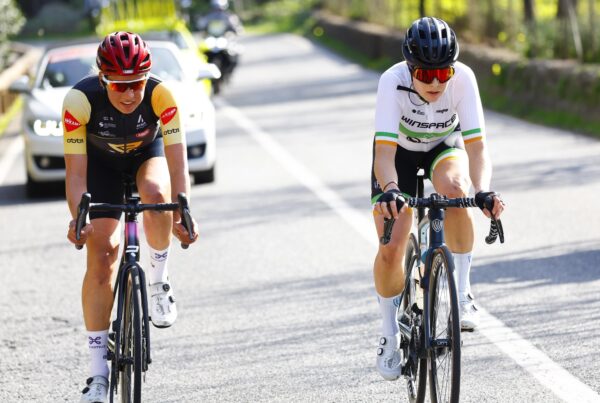A report shows that when bike lanes are built, people cycle more and drive less
Cycling Investment Plan
Photograph Source PIXABAY
The most successful routes were segregated from motor traffic, rather than just painted onto roads.
If you took a time machine back to John Dobson Street in central Newcastle in 2013, you’d be struck by its transformation in the years since.
An inhospitable dual carriageway has been replaced by a single carriageway with wider pavements and a 400m bike lane. The result: a fourfold increase in people cycling along the route.
Initial findings from a government report reveal how just 14 disconnected cycle schemes in eight English cities, part of the government’s Cycle City Ambition Fund programme (CCAF), have cut 440,000 car trips per year, replaced 2m kilometres of driving with cycling trips and made cycling attractive for a broader demographic.
This week the government announced £5bn over five years for cycling and buses, including 250 miles of cycle routes, which they say will be built to tough new design standards. Although Boris Johnson said on Tuesday in the Commons that just £350m of that would be for cycling, this appeared to be a mistake. The DfT says there will not be any clarification on how much money will go where until the spending review

Photograph Source PIXABAY
The transport announcement was met with derision from the opposition for its piecemeal nature, though Johnson said more money was coming in this month’s budget. However, the new CCAF report highlights how important it is for the government to build quality cycle routes that are more than just white paint.
A quick history: it is a peculiar quirk that cycling has one of the best returns on Cycling investment of all transport, £5.50 per £1 spent, and yet it suffers the most myopic planning. So it was that in 2013, just eight English cities and regions received money to spend, sharpish, on cycling infrastructure and “softer measures” such as training and promotion.
The lucky few sprang into action. They were: Birmingham, Cambridge, Greater Manchester, Newcastle, Norwich, Oxford, Bristol, Bath and north-east Somerset and south Gloucestershire, and West Yorkshire Combined Authority (Leeds, Bradford and neighbouring areas).
They came up with a mixed bag of cycle superhighways, shorter segregated routes, “mixed routes” of quiet roads, green space and segregated paths, city centre schemes, canal towpaths and junction treatments. Some were very good; others were not.
The initial findings were city-wide increases in cycling in all eight areas and, in some places, a decrease in car journeys. But their success varied.
These are interim figures, with work on the final report just starting. Their lessons are:
• Build it and they will cycle more – and drive less. The report’s authors note a very clear cycling uptick in cities that invested in cycling infrastructure, many with a similar magnitude of reduction in car use. At least 440,000 car trips per year have switched to cycle trips because of the new routes, or roughly 2m kilometres of driving. Some of the increase was a continuation of an upward trend in cycling before investment, which means many cities were “pushing at an open door”.
• All cycle lanes are not created equal. Consistent, kerb-protected routes are a better cycling investment than the less ambitious white-paint-on-the-road routes, if you want more people using them. The most successful routes were away from motor traffic entirely, including improved towpaths in Birmingham, where cycling increased by 157%. In Manchester, a decent-quality protected cycle route on Wilmslow Road has prompted increases of between 85% and 176% since completion – and numbers are still climbing. On Manchester’s Broughton cycleway, a lower-quality route “protected” by plastic wands and “armadillos” (little rubber blocks bolted to the road), there was, however, little change.
• Better cycle routes mean greater diversity. The new infrastructure seems to attract people who are more representative of the general population. Surveys found 18% of new riders were from ethnic minority groups compared with 8% of existing cyclists and 14% of the general population. About 43% of new cyclists were women, compared with 33% of existing riders. The findings also suggest more new cyclists were from households with lower than average earnings than existing riders.
• A bike lane here and there isn’t enough to improve safety, or perceptions of safety. For that, you need a network. Surveys from the eight areas showed little improvement in how safe people felt cycling there – particularly where children were concerned. This is hardly surprising, as most changes were only to a road or two in each location.
• Cycling investment brings health benefits. Half of people who already cycled and four-fifths of new cyclists say they noticed improvements in their wellbeing because of the new cycle routes.
The government has admitted that it is just 40% of the way to its target of doubling cycling by 2025, and that “substantial further cycling investment” is needed.
The charity Cycling UK says that to meet the target, the government must invest a further £6-8bn by 2025 on top of the £2.4bn the government believes will be spent by 2021, as well as decent new design standards for cycle infrastructure.
If our time machine could travel seven years into the future, we should expect to see similar people-friendly transformations in town and city centres up and down the country. Boris Johnson told the Commons yesterday that he wanted a new generation of cyclists to “pedal safely and happily to school and work in tree-dappled sunlight on their own network of segregated paths”. The excuses for not building that network are getting harder to make.
Source: www.theguardian.com
Source link








